When we talk about the deadly snakes, few names comes to our mind with a fear. Like the black mamba vs viper, typically they are referring to venomous species in the family Viperidae, such as the Gaboon viper (Bitis gabonica) or Russell’s viper (Daboia russelii). In this scientific features breakdown of black mamba vs viper, we will explore which of these serpents rules in best venom toxicity, strike speed, survival strategy, and more.
- Black Mamba (Dendroaspis polylepis)
- Viper (Bitis gabonica / Daboia russelii)
So I have covered mostly all the interesting features with this article and it offers a scientifically accurate and comprehensive comparison based on 10 main categories with 10 detailed subtopics each. If you’re wondering about Black Mamba vs Viper snake behavior, biology, and combat ability, you’re in the right place.
All the data here is fully researched and I tried my best to give you the Most valid data in 2025. So hope you will enjoy the wonders of these two deadly snakes. So keep reading, Lets see who will win in a Black Mamba vs Viper face to face fight! Enjoy!
1. Body Specifications
| Subtopic | Black Mamba | Viper (Gaboon/Russell’s) | Winner |
|---|---|---|---|
| Average Length (m) | 2.5–3.2 m | 1.2–2.1 m | Black Mamba |
| Average Weight (kg) | 1.6–2.5 kg | 6–10 kg (Gaboon) | Viper |
| Skull Structure | Elongated, narrow | Broad, triangular | Viper |
| Bone Density (g/cm³) | Moderate | High | Viper |
| Body Shape & Adaptation | Slim, built for speed | Stout, ambush predator | Draw |
| Tail Length (m) | ~0.5 m | ~0.3 m | Black Mamba |
| Scale Type | Smooth | Keeled | Draw |
| Sexual Dimorphism | Females slightly larger | Females larger | Draw |
| Thermoregulation Mechanism | Ectothermic | Ectothermic | Draw |
| Category Winner | Draw (3–3) |
2. Venom Characteristics
| Subtopic | Black Mamba | Viper (Gaboon/Russell’s) | Winner |
|---|---|---|---|
| Venom Type | Neurotoxic | Hemotoxic | Black Mamba |
| Venom Yield (mg) | 100–400 mg | 200–1000 mg | Viper |
| Venom Potency (LD50) | 0.25 mg/kg (subcutaneous) | 0.15–0.44 mg/kg | Draw |
| Delivery System | Fixed front fangs | Hinged, extremely long fangs | Viper |
| Salivary Enzyme Composition | Neurotoxin enzymes | Proteolytic enzymes | Draw |
| Envenomation Speed | Very fast | Fast | Black Mamba |
| Antivenom Availability | Widely available | Available in high-risk regions | Draw |
| Effect on Prey | Paralysis, respiratory failure | Tissue damage, internal bleeding | Black Mamba |
| Regeneration of Venom | Moderate | Moderate | Draw |
| Category Winner | Draw (3–3) |
3. Bite and Physical Force – Black Mamba vs Viper
| Subtopic | Black Mamba | Viper (Gaboon/Russell’s) | Winner |
|---|---|---|---|
| Bite Force (PSI) | ~50 PSI | ~100 PSI | Viper |
| Jaw Gape (degrees) | ~60° | ~180° | Viper |
| Constriction Strength | None | Minimal (Gaboon) | Black Mamba |
| Neck Musculature | Light | Heavily built | Viper |
| Striking Speed (ms) | 44–70 ms | ~100 ms | Black Mamba |
| Fang Penetration Depth | Short (~6 mm) | Long (~50 mm in Gaboon) | Viper |
| Bone-Crushing Ability | None | Some (Russell’s) | Viper |
| Bite Precision | Extremely high | High | Black Mamba |
| Bite Repetition | Multiple strikes | Usually one strike | Black Mamba |
| Category Winner | Draw (4–4) |
4. Locomotion and Speed
| Subtopic | Black Mamba | Viper (Gaboon/Russell’s) | Winner |
|---|---|---|---|
| Maximum Land Speed (km/h) | 16–20 km/h | 2–3 km/h | Black Mamba |
| Swimming Speed (km/h) | Moderate (~5 km/h) | Low (~2 km/h) | Black Mamba |
| Climbing Ability | Good | Poor | Black Mamba |
| Acceleration | Excellent | Very poor | Black Mamba |
| Endurance Over Distance | Moderate | Low | Black Mamba |
| Burrowing Capability | Minimal | Good (Russell’s) | Viper |
| Slithering Efficiency | Very High | Low | Black Mamba |
| Limb Dexterity | N/A | N/A | Draw |
| Stealth Movement | Moderate | Very High | Viper |
| Category Winner | Black Mamba |
5. Senses and Neurology – Black Mamba vs Viper
| Subtopic | Black Mamba | Viper (Gaboon/Russell’s) | Winner |
|---|---|---|---|
| Vision Type | Daylight vision, moderate clarity | Excellent night vision | Viper |
| Hearing Sensitivity | Low | Low | Draw |
| Jacobson’s Organ | Highly developed | Highly developed | Draw |
| Heat-Sensing Pits | None | Present (in Gaboon) | Viper |
| Reflex Speed (ms) | Extremely fast | Slow | Black Mamba |
| Brain-to-Body Ratio | Higher | Lower | Black Mamba |
| Tactile Response | High | Moderate | Black Mamba |
| Chemoreception Accuracy | High | High | Draw |
| Nervous System Complexity | Moderate | Moderate | Draw |
| Category Winner | Draw (3–3) |
6. Intelligence and Behavior
| Subtopic | Black Mamba | Viper (Gaboon or Russell’s) | Winner |
|---|---|---|---|
| Aggression Level | Highly defensive when provoked | Generally docile | Black Mamba |
| Territoriality | Defends home range | Nomadic, not territorial | Black Mamba |
| Hunting Strategy | Active hunter; visual cues | Sit-and-wait ambush | Draw |
| Problem-Solving Ability | Responds well to stimuli | Poor learning observed | Black Mamba |
| Learning Capacity | Moderate (via conditioning tests) | Low | Black Mamba |
| Social Behavior | Solitary | Solitary | Draw |
| Defensive Display | Open mouth, hood, hissing | Loud hissing, coil inflation | Draw |
| Risk Assessment | Will often flee fast | Relies on camouflage | Draw |
| Exploration Tendencies | Actively explores new terrain | Minimal movement unless hungry | Black Mamba |
| Intelligence Indicators | Avoids humans, strategic retreat | Passive defense | Black Mamba |
| Category Winner | Black Mamba |
7. Habitat and Adaptability – Black Mamba vs Viper
| Subtopic | Black Mamba | Viper (Gaboon or Russell’s) | Winner |
|---|---|---|---|
| Geographic Distribution | Sub-Saharan Africa | Africa, South Asia, SE Asia | Viper |
| Habitat Diversity | Savannas, rocky hills, forests | Forests, grasslands, urban edges | Viper |
| Temperature Tolerance | Warm, arid to semi-arid climates | Wide (cool forests to hot plains) | Viper |
| Environmental Flexibility | Sensitive to human disruption | Adapts to disturbed habitats | Viper |
| Altitude Range | Up to 1,800 m | Up to 2,000 m | Viper |
| Urban Survival Potential | Low | Moderate | Viper |
| Shelter Finding Ability | Uses termite mounds, burrows | Excellent burrowers, leaf cover | Draw |
| Seasonal Activity | Active year-round | May reduce movement in cold | Black Mamba |
| Migration Tendencies | Very limited | Limited, territory-based | Draw |
| Ecosystem Role | Top predator of rodents/birds | Rodent population control | Draw |
| Category Winner | Viper |
8. Reproduction and Lifecycle
| Subtopic | Black Mamba | Viper (Gaboon or Russell’s) | Winner |
|---|---|---|---|
| Reproduction Type | Oviparous (egg-laying) | Viviparous (live birth) | Viper |
| Offspring Per Cycle | 6–17 eggs | 20–40 live young | Viper |
| Hatchling Survival Rate | Moderate due to vulnerability | Higher—live birth offers advantage | Viper |
| Breeding Season | Spring (varies by region) | Seasonal, varies by region | Draw |
| Parental Investment | None | None | Draw |
| Growth Rate | Fast | Moderate | Black Mamba |
| Sexual Maturity Age | 2–3 years | 3–4 years | Black Mamba |
| Reproductive Frequency | Annual | Biennial in some regions | Black Mamba |
| Lifespan (wild) | ~11 years | 15–20 years | Viper |
| Mating Behavior | Male combat observed | Scent trailing; no combat | Draw |
| Category Winner | Viper |
9. Defense Mechanisms – Black Mamba vs Viper
| Subtopic | Black Mamba | Viper (Gaboon or Russell’s) | Winner |
|---|---|---|---|
| Camouflage Quality | Poor (dull gray/tan) | Excellent (leaf-litter mimicry) | Viper |
| Escape Speed | Up to 12.5 mph (20 km/h) | Very slow | Black Mamba |
| Threat Display | Hood, open mouth, loud hiss | Hissing, inflating, puffing | Draw |
| Bluff Behavior | Often warns before striking | Often waits passively | Black Mamba |
| Defensive Striking | Rapid multi-strike ability | Powerful but slow strike | Black Mamba |
| Venom as Deterrent | Extremely fast-acting neurotoxin | Fatal but slower | Black Mamba |
| Scale Thickness | Thin and smooth | Thick, keeled | Viper |
| Post-strike Retreat | Retreats quickly | Often remains coiled | Black Mamba |
| Camouflage Dependency | Low | Very high | Viper |
| Strike Precision | High accuracy at long distance | Short-range precision | Black Mamba |
| Category Winner | Black Mamba |
10. Human Interaction and Danger
| Subtopic | Black Mamba | Viper (Gaboon or Russell’s) | Winner |
|---|---|---|---|
| Human Fatalities Annually | High in untreated cases | High, especially Russell’s Viper | Draw |
| Antivenom Availability | Available but not always nearby | Region-specific, less accessible | Black Mamba |
| Aggressiveness Toward Humans | Defensive but confrontational | Passive unless stepped on | Black Mamba |
| Warning Given Before Bite | Yes (open mouth, hiss) | Sometimes none | Black Mamba |
| Commonality of Encounters | Moderate | High in populated regions | Viper |
| Hospitalization Rate | High if untreated | High (especially Russell’s) | Draw |
| Symptom Onset Speed | Very fast (within 30 minutes) | Moderate (1–3 hours) | Black Mamba |
| Medical Urgency | Immediate (respiratory failure) | Immediate (hemorrhage, kidney) | Draw |
| Bite Without Provocation | Rare | Rare | Draw |
| Public Fear/Reputation | “Most feared snake in Africa” | Feared locally | Black Mamba |
| Category Winner |
Face-to-Face Fight Analysis: Black Mamba vs Viper
When imagining a direct fight between a Black Mamba and a Viper ( Gaboon or Russell’s Viper), we must consider more than just venom power including speed, strike dynamics, defensive behavior, and environmental conditions.
Size & Physical Edge
Black mambas are longer and faster, mostly growing up to 14 feet, compared to the 5–6 feet length of most vipers. Though vipers are bulkier and heavily muscled, the mamba’s length gives it a reach advantage in combat.
Speed & Agility
The black mamba has a clear advantage in speed, both in movement and strike action. It can strike multiple times in rapid succession and then retreat quickly. In contrast, the viper relies on one powerful ambush strike, making it vulnerable in repeated exchanges.
Venom Effectiveness
The black mamba’s neurotoxic venom acts faster, potentially it can shut down an opponent within 30 minutes. The viper’s hemotoxic venom is deadly but slower-acting, making it less effective in an immediate duel where speed is critical.
Combat Scenario
If Black Mamba vs Viper fights face to face in an open area. The black mamba’s reach and speed would likely allow it to do the first strike. Even if the viper managed a bite, the mamba might still survive long enough to escape or fight back. However, in dense vegetation or a confined space, the viper’s camouflage and powerful ambush strike could provide it with a surprise advantage.
Overall Winner: Black Mamba
Except the vipers lethal venom and ambush skills, the black mamba’s unmatched speed, longer reach, faster acting venom, and more aggressive strike behavior would give him the more advantage in any battle environment. The mamba’s special ability to hit first and multiple times makes it the more dangerous and dominant snake in a one-on-one fight.
Black Mamba Facts:
-
Fastest snake on land, reaching speeds up to 12 mph (20 km/h).
-
Despite the name, it’s not actually black. its skin is gray or olive; the inside of its mouth is black.
-
Can deliver up to 12 venomous bites in one attack.
-
Without a quick treatment Its venom can kill a human in under 30 minutes.
-
very shy and reclusive, Mostly it prefers to flee rather than fight.
-
Can grow up to 14 feet (4.3 meters) long.
-
Lives in sub-Saharan Africa, especially savannas and rocky hills.
-
when cornered its being highly territorial and aggressive
-
Shutting down the nervous system with neurotoxic venom
-
Once Its bite was called the “kiss of death” .
Viper Facts:
-
Vipers include rattlesnakes, pit vipers, and adders.
-
Most vipers have hinged fangs that fold back when not in use.
-
Viper venom is typically hemotoxic, destroying tissue and blood cells.
-
Some species give live birth without egg laying!
-
Can Found on every continent except Australia and Antarctica.
-
Use heat-sensing pits (in pit vipers) to detect warm-blooded prey.
-
Mostly they are staying still hours for their strike. Vipers are ambush predators
-
Their venom varies, some cause internal bleeding, others paralyze.
-
The Gaboon viper has the longest fangs of any snake (up to 2 inches).
-
Despite their deadly bite, most viper species are not aggressive to humans unless they are disturbed.
Scientific References
- WHO Guidelines for the Production, Control and Regulation of Snake Antivenom Immunoglobulins
- National Geographic: Black Mamba
- Reptile Database – Dendroaspis polylepis
- Venomous Snakes of the World by Carl Gans
- Toxinology of Russell’s Viper
- Gaboon Viper Info – African Snakebite Institute
- Clinical Toxicology – Comparative LD50 of Snake Venoms
Read More ? – Hippo vs Tiger Who Wins : A Full Comparison
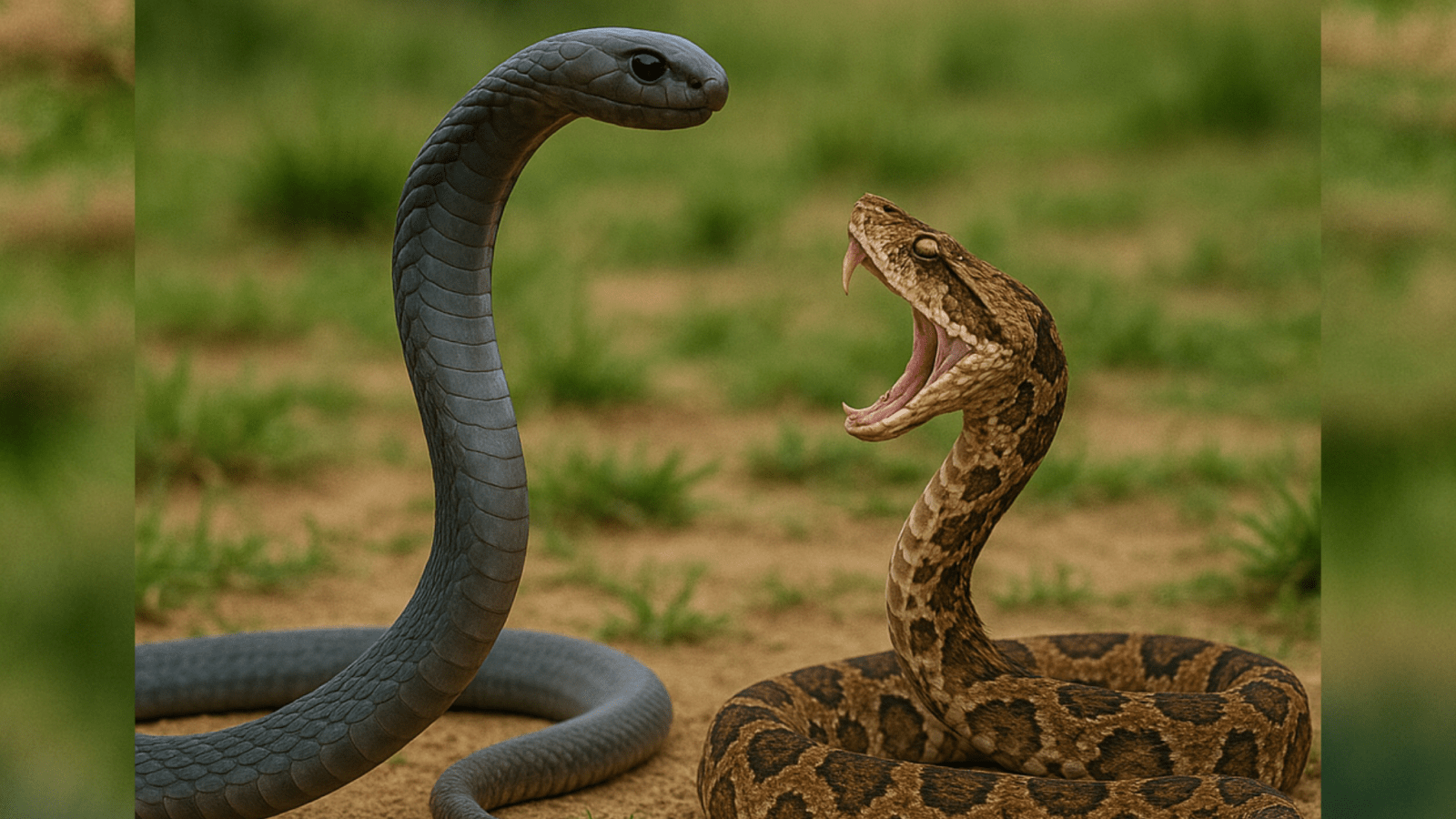
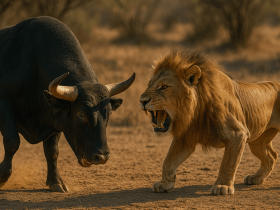
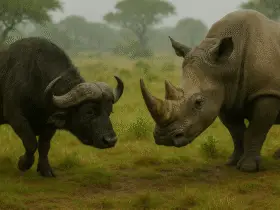
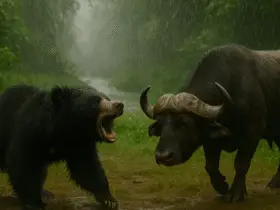

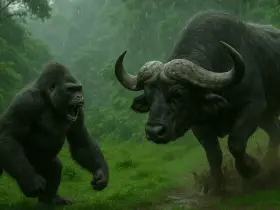
Good
fantastic explanation !!